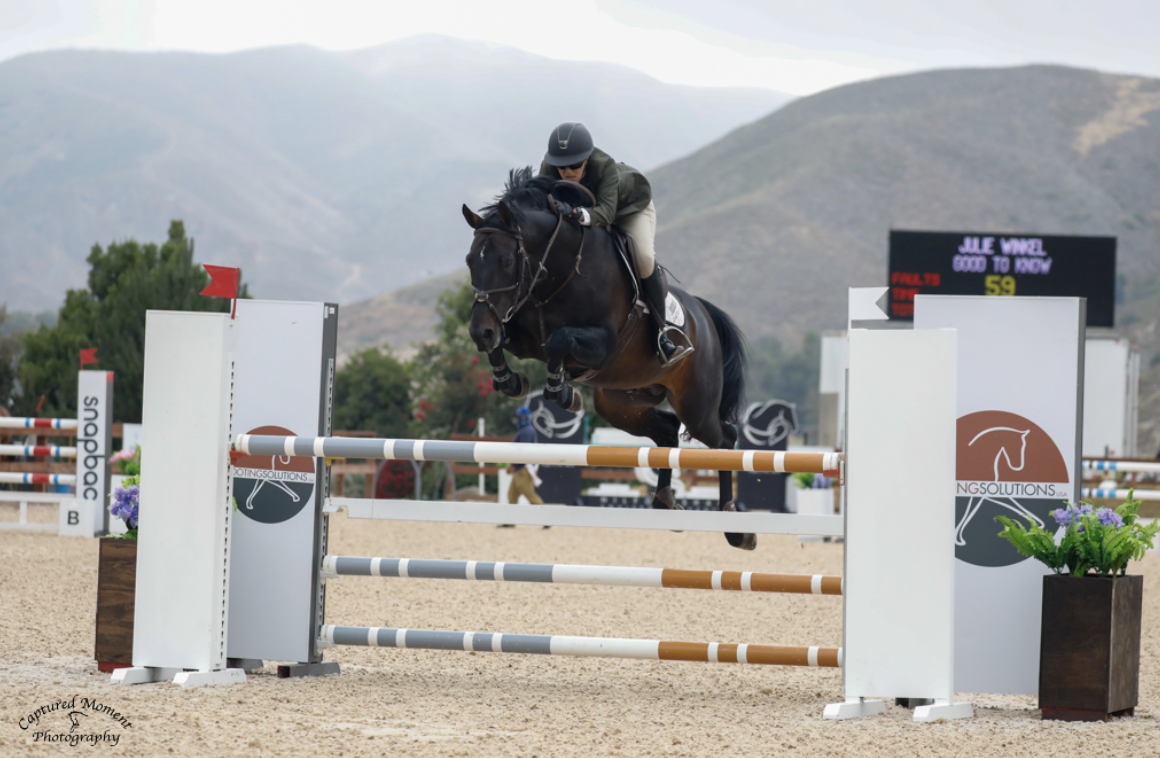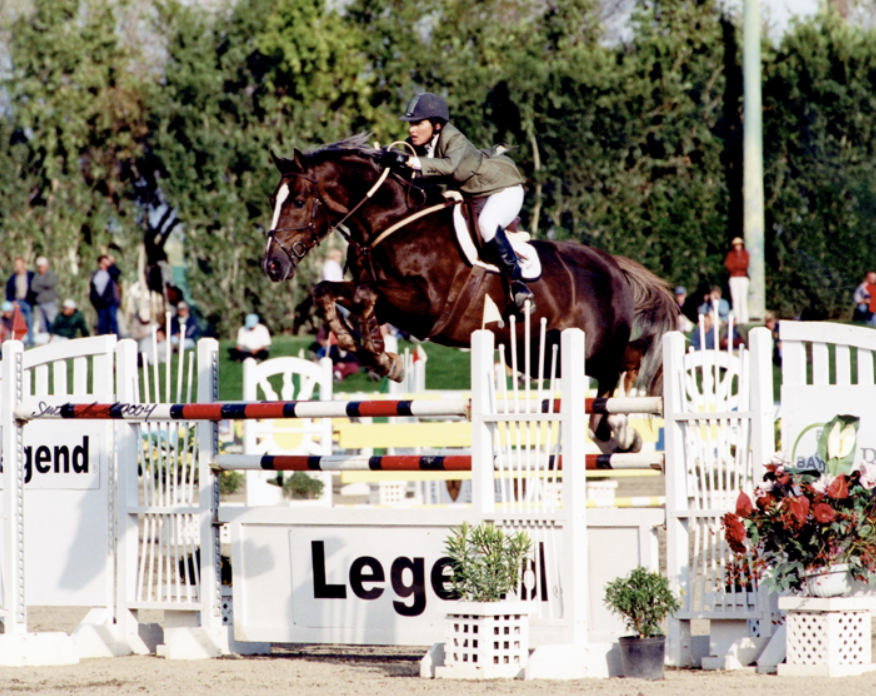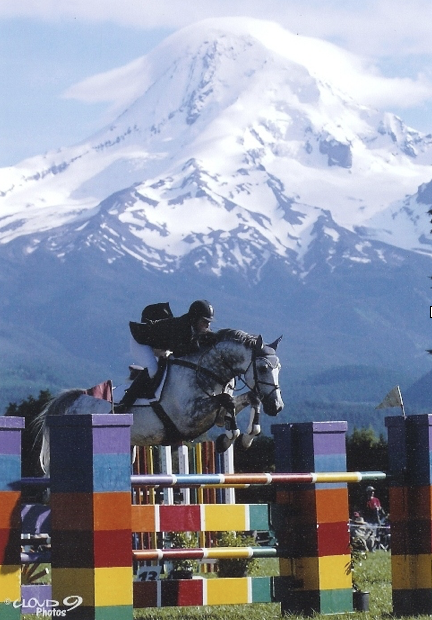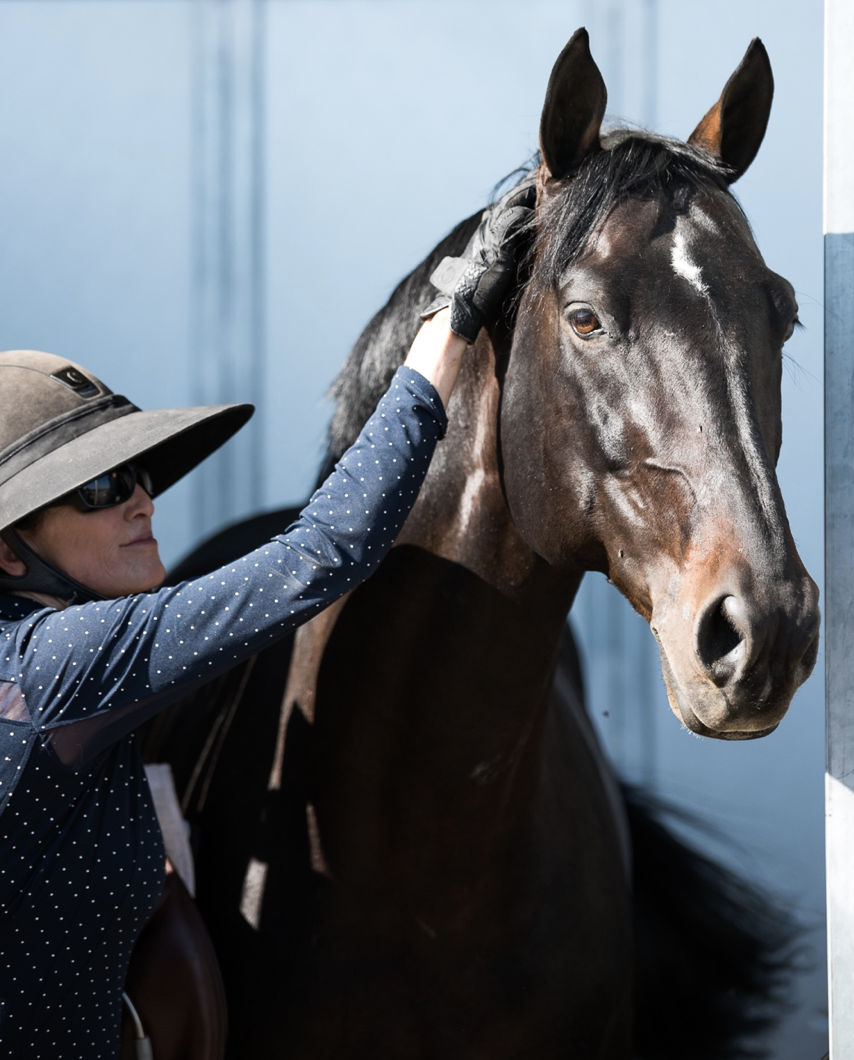
Pursuing Horsemanship and Knowledge with Julie Winkel
Blog
Pursuing Horsemanship and Knowledge with Julie Winkel
Success in equestrian sports is dependent on the strength of the partnership between the horse and rider. Horsemanship and knowledge build that partnership. Julie Winkel, owner and manager of Maplewood Stables, Inc. in Reno, Nevada, understands the partnership between horses and riders better than most. She is a sought-after trainer, breeder, judge, and clinician. Julie’s vast experiences provide a wealth of knowledge on developing horsemanship skills and partnerships between horses and riders.

Julie and Good To Know – her favorite all-time partner. Photo: Captured Memories Photography.
“The basic qualities I’m looking for in a horse and rider partnership are the compatibility and partnership between the horse and rider, and the type of communication they’ve formed as a pair,” Julie says.
Age and Experience
Age is often a heavily considered factor when searching for a new horse, but youth is not the best option here. For Julie, the best age in jumpers, hunters, and the equitation division are horses in their early teens. “In this sport the horse’s experience trumps everything else. Horses need experience and miles to make good decisions. My motto is to buy an overqualified horse for an underqualified rider – so a jumper coming down the ranks can teach a greener rider. Overqualified riders should have the young or green horses because they can bring them up through the sport.”
A horse in its early teens is at the height of their experience and career. These horses are in their prime. Riders shopping for a new mount shouldn’t overlook horses in their teens.
Youth does have some advantages for the riders. Julie explains that anyone that starts riding as a kid learns to ride by feel, not by fear. The older we get, the more difficult it is because we have those fears to contend with. Anyone who has the opportunity to start as a kid has an advantage over someone that starts as an adult – even if they take a break and come back 20 years later.
“I’m not saying it’s too late to start as an adult though,” Julie continues. “We have many people that come to the sport later in life when they can afford a horse, or their kids are grown. Adults that are new to the sport need to get the right horses that teach them the right ropes, and then you can learn fast.”

Osilvis, Julie’s flagship stallion and main Grand Prix horse as well as the sire of countless offspring that were successful in the hunter and jumper rings. Photo courtesy of Julie Winkel.
Over Riders and Under Riders
Age and experience of the horse and rider are two qualities that most consider when developing a new combination – but as Julie explains, we need to look deeper than that.
“The number one thing is matching the rider and the horse,” Julie says. “We need to understand the idea of over riders and under riders – it is based on the rider’s personality. Then, match the rider’s personality to the right type of horse and they will be successful.”
Over riders are outgoing, loud, or go-getters; these are the extroverts. An under rider is meeker and more laid back; these are introverts. You want to match the rider’s style to a horse that has the opposite style – as with people, opposites attract. Over riders do better on a lazier horse. Under riders bring out the best in horses with a motor.
“Understanding the dynamics of a horse and rider is key to matching them and creating successful teams,” Julie says. “All horses and riders fall into one of these categories. Riders will be more successful if they ride a horse of the opposite type but will learn more on a horse that is the same type as the rider.”
Of course, there are degrees to everything. The goal in training an extremely lazy horse is to get it more to the middle and for the horse with more motor, the goal is to have it take a breath and relax.
“We want the over rider to be smoother and more thoughtful, and the under rider has to become more of a go-getter and take hold,” Julie says. “One of the great things about riding is that it teaches you about improving yourself as a person.”
A rider that understands their category, and their horses’ can adapt and be successful. Competitive success or challenges in training and learning experiences can be determined from that understanding of over and under rider categories.
Building a Team and Fostering Horsemanship
Compatibility and suitability have to be present in any horse and rider team physically and mentally. Mentally it’s the over rider and under rider scenario. Physically, you want to match the rider to a horse of their size and stature. A tall, thin rider on a horse that is too small for them looks awkward and it’s harder for the rider to communicate with the horse. This also happens when a petite rider is on a large horse – communication between the team is harder.

Cartouche Z – aka Ace – with Julie at the Hood River Grand Prix. Julie says, “He was the most competitive ever jumper I ever had!” Photo: Cloud 9 Photos.
“The biggest thing people are missing is how much every horse is an individual,” Julie says. “Getting to know that horse for who they are and working with them is one of the best things a rider can do to strengthen their partnership. A lot of horses aren’t confident and when we can help give them that confidence they do really well for us.”
Julie founded Goodtoknow Horses, a 501(c)3 that helps riders improve their horsemanship and understanding of their equine partners in 2018. Goodtoknow Horses offers innovative programs, clinics, and seminars, including the Young Horse Trainer School, the First Responders Horse Handling and Safety Clinic, a Hunter and Jumper Course Design School, Sport Horse Conformation Seminar, and a Judge’s School. These programs have reached hundreds of riders and improved the lives of thousands of horses.
“I wish more riders were interested in horsemanship – and really spending some time with their horse at home and at shows,” Julie says. “The saddest thing for me is knowing that a lot of horses don’t live in a natural state. Horses need to be turned out, have the companionship of other horses, and be able to put their heads down to graze. It’s really important for people to know what the home situation will be for the horse they are shopping for. Does the facility you want to use have turnout, can the horses see each other and put their heads over the stall doors? A more natural way of keeping horses also keeps them clear headed and happier.”

Maplewood Stables is a 200-acre facility with ample turnout and trails for horses and riders. The ponds, hills, and creeks on the property provide her horse’s with the natural lifestyle that is so imperative for their mental health. Time spent trail riding the property and adjacent Bureau of Land Management trails keeps the horses fresh and fit for their schooling sessions and shows – and it builds a stronger partnership between the horse and rider.
Julie is committed to educating equestrians – the Maplewood Stables Horse Industry Training Program is another education initiative she started. The Commission of Postsecondary Education in Nevada permanently licensed it in 2017. Enrolled students and graduates of the program hail from Alaska to Texas and New York to Washington. They learn all aspects of horsemanship and business management – another initiative that improves the lives our horses while preparing the next generation of equestrian professionals.
Matching horses and riders is an art and a science – one that Julie Winkel knows well and shares with other equestrians. When we match the horse and rider mentally and physically, we form the basic foundation of a successful partnership. Time spent with the horse and really understanding the nuances of the horse’s personality augment that foundation. Show ring success and lifelong memories naturally happen when the foundation is strong.

Julie and Good To Know, aka Stallone, at home in Reno. Photo courtesy of Julie Winkel.
“More and more I hope to see people wanting to be interested in and learning about horses and how special they are to have in our lives,” Julie concludes. “When we take good care of our horses they want to do a good job for us.”
Visit Julie Winkel and Maplewood Stables at ProEquest!
